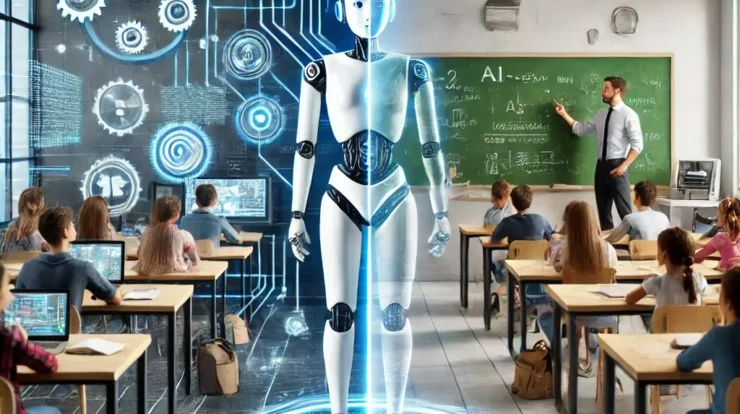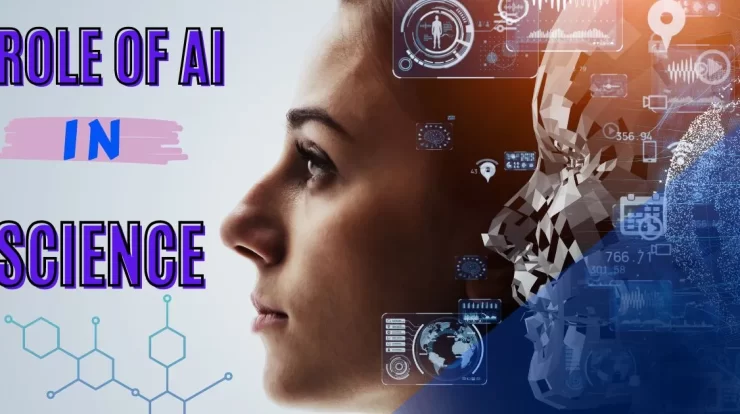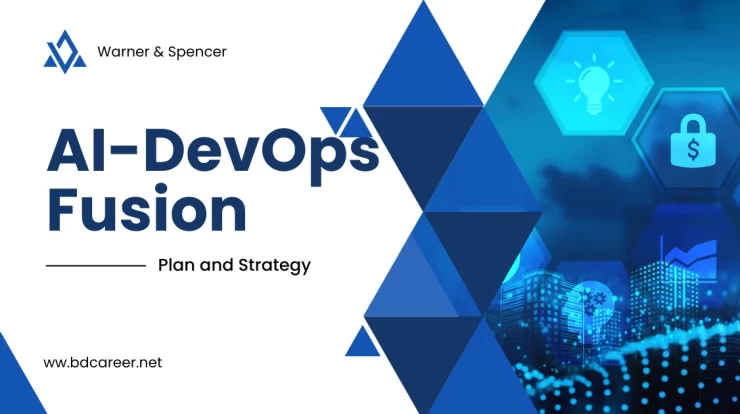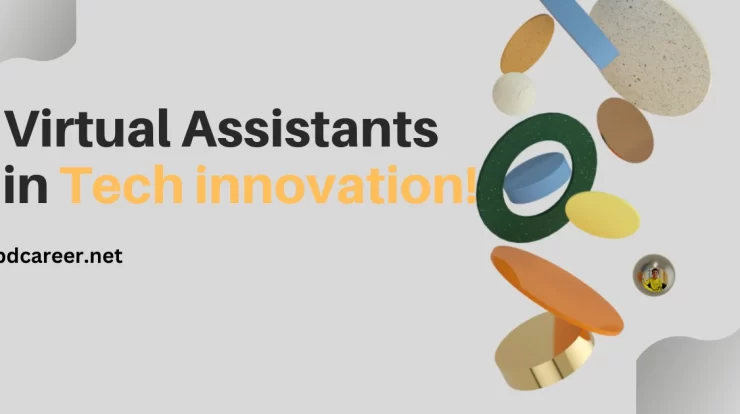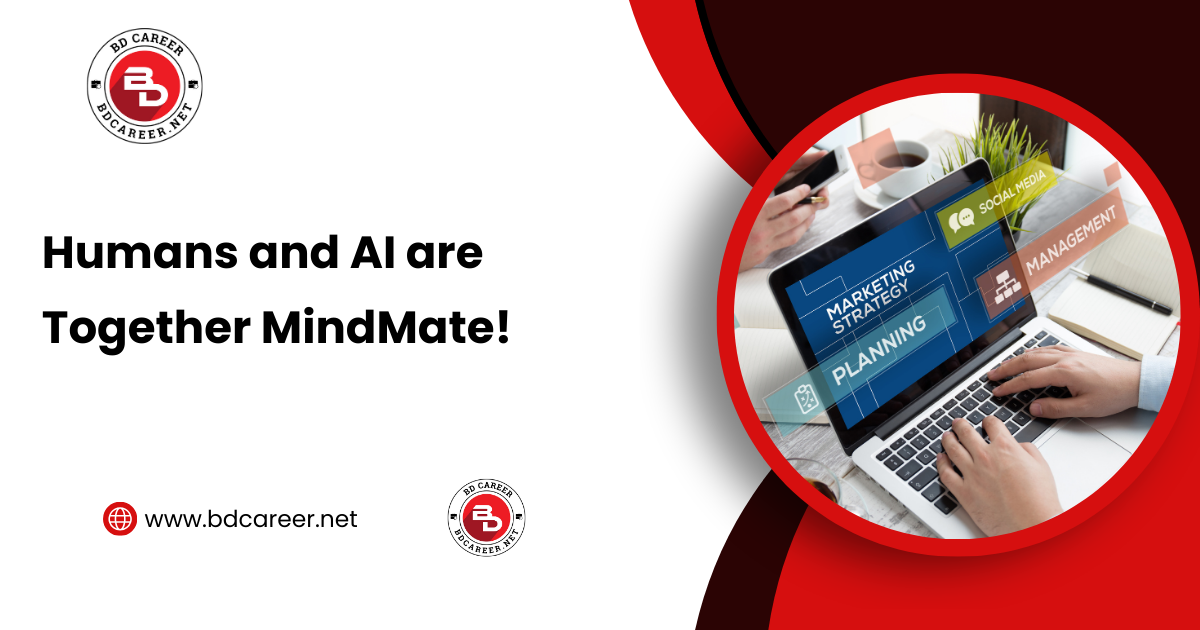
Unlock the symbiotic future of work as we dispel Humans and AI talk about AI job myths, explore augmented roles, and provide strategies for seamless adaptation. Join us for a journey where human ingenuity and AI efficiency converge for a dynamic workforce.
Contents
- Introduction
- Dispelling Myths About AI Job Replacement
- Human and AI Synergy
- Ethical Considerations
- Augmented Jobs for Humans and AI
- Fostering Entrepreneurship and Innovation in the AI Era
- Strategies for Adapting to the Changing Job Landscape
- Fostering Entrepreneurship and Innovation in Humans and AI
- Conclusion
- FAQs
Introduction
Today we will talk about and talk about humans and AI. Artificial Intelligence (AI) has been a focal point of discussion, often depicted as a threat to human employment. However, as we venture beyond the buzz and sensationalism, a more nuanced reality emerges—where humans and AI coexist and collaborate for mutual benefit. In this exploration, we will dispel myths surrounding AI job replacement, shed light on the complementary nature of human and AI capabilities, examine the concept of “augmented” jobs, offer strategies for adapting to the dynamic job landscape, delve into ethical considerations, and explore the fostering of entrepreneurship and innovation.
Dispelling Myths About AI Job Replacement
One prevailing misconception surrounding AI is the fear that it aims to replace human jobs entirely. However, the essence of AI lies in augmentation, not elimination. Rather than rendering human roles obsolete, AI excels at automating mundane tasks, freeing up valuable human resources for more intricate and creative endeavours.
To exemplify, consider industries like manufacturing, where AI-driven robotic arms can handle repetitive assembly line tasks with unparalleled precision, allowing human workers to focus on quality control, innovation, and complex problem-solving. Dispelling the myth requires recognizing AI as a tool for enhancing human potential, not diminishing it.
Debunking Fears and Concerns
The fear of job loss due to automation often stems from a lack of understanding about AI’s role. It is essential to debunk these concerns by emphasizing that AI is not a standalone force but a tool wielded by humans. Rather than leading to unemployment, AI has the potential to create new avenues of employment and revolutionize industries.
For instance, in customer service, AI-powered chatbots handle routine queries, streamlining customer interactions. Human representatives, in turn, focus on resolving complex issues and providing a personalized touch. Integrating AI doesn’t replace jobs; it refines and reshapes them.
Ethical Considerations in AI Implementation
As we navigate the integration of AI into various industries, ethical considerations become paramount. Ensuring responsible AI use involves addressing issues such as algorithm bias, job displacement, and data privacy. Organizations must prioritize ethical frameworks, transparent AI development, and ongoing assessments to mitigate potential societal challenges.

Human and AI Synergy
Recognizing the unique strengths of humans and AI is essential for fostering effective collaboration. Humans bring emotional intelligence, critical thinking, and creativity—qualities that AI lacks. In sectors like marketing, where creativity is paramount, human intuition plays a vital role. Conversely, AI excels at data analysis, pattern recognition, and executing repetitive tasks with precision. The synergy between these strengths creates a powerful partnership that can drive innovation across various industries.
Take the healthcare sector, for instance. While AI can analyze vast datasets for diagnostics, the human touch in patient care adds compassion and empathy. This synergy results in a more comprehensive and holistic healthcare approach. By emphasizing collaboration over competition, we unlock the full potential of human-AI partnerships.
Emphasizing Collaboration in Human and AI
Rather than viewing AI as a competitor, envisioning it as a collaborator is crucial. In journalism, AI algorithms can quickly process and generate news articles based on data. However, the journalist’s investigative skills, contextual understanding, and storytelling ability add depth and relevance to the news.
Human-AI collaboration has the potential to revolutionize industries. For example, in legal research, AI tools can sift through vast legal databases, providing quick references. Lawyers, in turn, apply nuanced interpretation and legal reasoning, creating a symbiotic relationship that enhances efficiency and accuracy.
The Role of Creativity in Humans and AI Partnerships
While AI excels in analytical tasks, creativity remains a distinct human trait. Industries like art, design, and content creation require a level of originality and emotional resonance that AI struggles to replicate. Integrating AI into these sectors can streamline processes, but the human touch in ideation and artistic expression remains irreplaceable.
Ethical Considerations
As AI integration rises, ethical concerns take centre stage. Organizations must address biases in algorithms to ensure fair outcomes. Ongoing assessments are crucial, especially in areas like hiring and criminal justice. Job displacement fears should be met with proactive reskilling initiatives, empowering employees with new skills. Striking a balance between innovation and data privacy is essential to protect individuals and their sensitive information.

Augmented Jobs for Humans and AI
The concept of “augmented” jobs represents a paradigm shift—from fearing job displacement to embracing collaboration for enhanced job roles. Humans and AI work together in augmented jobs, each contributing their unique strengths. For instance, in customer service, AI-driven chatbots handle routine queries, allowing human representatives to focus on complex problem-solving and building customer relationships. This collaborative approach improves efficiency and transforms job roles into more dynamic and fulfilling experiences.
In manufacturing, augmented jobs may involve humans overseeing AI-driven robotic systems. This collaboration ensures the precision and efficiency of tasks while providing human oversight and adaptability. Augmented jobs are a testament to the idea that technology can amplify, rather than replace, human skills, leading to a more advanced and adaptable workforce.
Positive Impact in Humans and AI
Workplaces embracing human-AI collaboration witness a tangible increase in productivity. By automating routine tasks, AI allows human workers to focus on higher-order activities, fostering innovation and creativity. In fields like finance, where data analysis is paramount, combining AI’s analytical capabilities and human strategic thinking results in a more agile and adaptive workforce.
Nurturing Innovation in Humans and AI
The synergy in augmented jobs fosters an environment ripe for innovation. Human creativity, coupled with AI’s ability to process vast amounts of information quickly, leads to breakthroughs in problem-solving and creativity. This collaborative approach can drive advancements across industries, from research and development to customer experience.
Fostering Entrepreneurship and Innovation in the AI Era
Adapting to AI’s impact requires a culture of entrepreneurship. AI catalyzes creativity and business innovation. Empowering individuals to become entrepreneurs ensures widespread benefits. As a driver of innovation, AI propels industries forward, from healthcare to finance. Entrepreneurship in the AI era involves adapting, actively shaping industries, and creating new markets for economic growth.
Strategies for Adapting to the Changing Job Landscape
Adapting to the changing job landscape requires a proactive approach, including continuous learning and upskilling. For instance, professionals must stay abreast of emerging technologies in the IT sector to remain competitive. Continuous learning ensures individuals remain relevant and adaptable despite technological advancements.
Building a Culture of Lifelong Learning Humans and AI
The evolving job landscape demands a shift in mindset towards lifelong learning. Companies and educational institutions must collaborate to create a culture that encourages ongoing skill development. This benefits individuals and contributes to a more resilient and agile workforce capable of navigating future challenges.
Role of Education and Training Programs in Humans and AI
The role of education is pivotal in preparing individuals for the integration of AI into various sectors. Educational institutions and training programs must provide foundational knowledge and foster adaptability and a forward-thinking mindset. Initiatives that bridge the gap between traditional skills and emerging industry demands are crucial.
In the healthcare sector, ongoing training ensures that medical professionals can effectively integrate AI tools into their practice. From utilizing AI for diagnostics to understanding ethical considerations, continuous education ensures healthcare workers remain at the forefront of advancements.
Fostering Entrepreneurship and Innovation in Humans and AI
Adapting to the changing job landscape also involves fostering entrepreneurship and innovation. By empowering individuals to become entrepreneurs, societies can capitalize on the opportunities presented by emerging technologies. AI can catalyze innovative startups, creating new markets and transforming existing industries.

Conclusion
In conclusion, the symbiotic relationship between humans and AI heralds a promising future for the workforce. Dispelling myths, recognizing the unique strengths of both entities, embracing augmented jobs, adapting through continuous learning, considering ethical implications, and fostering entrepreneurship are crucial steps toward building a collaborative and dynamic future.
By understanding that AI is a tool to enhance, not replace, human potential, we pave the way for innovation and growth. The evolving job landscape offers opportunities for individuals and industries to thrive through the fusion of human ingenuity and AI efficiency.
FAQs
Can AI completely replace human jobs?
No, AI is designed to augment human capabilities, not replace them. Human skills like creativity and emotional intelligence remain invaluable.
How can individuals adapt to the changing job landscape?
Continuous learning and upskilling are essential. Stay updated on industry trends and acquire new skills to remain competitive.
Are there examples of successful human and AI collaborations?
Industries like healthcare and customer service have witnessed successful collaborations, resulting in increased efficiency.
What is the role of education in preparing for AI integration?
Education is vital in providing the necessary skills and fostering adaptability to navigate the evolving job market.
Is there a balance between Humans and AI capabilities?
Yes, the balance lies in recognizing and leveraging the unique strengths of both humans and AI to create a more dynamic and efficient workforce.

